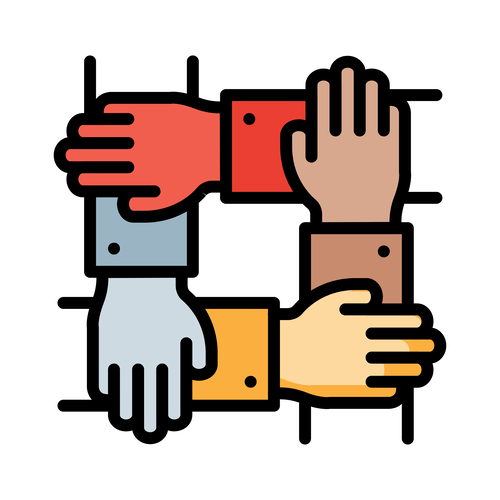Content
However, the change process is quite rigid and it may not be feasible to incorporate major changes in the product in the traditional SDLC. The actual system is built and coding is done by using automation tools to advantages of rad convert process and data models into actual prototypes. For customers looking for results in a short time , This model is the ideal choice . It also helps to refine the functional requirements of the application .
In this model, the development team and the client or client network work collaboratively to determine the goal of any given project. The project goals, problems, and expectations are communicated by the client/user and these are taken up by the development team to evaluate these requirements and finalize the agreed set of updates.

It increases the application’s usability and makes it more reliable in addressing business problems critical to end-users instead of technical problems of the developers’ interests. These parameters have to be carefully planned and adjusted before proceeding with the rapid application development approach. If your response is positive to all questions, you can choose the rapid application development approach. No-code development platforms provide relatively lesser customization and functionality as compared to low-code development platforms. With no-code development, you get more tools to organize information instead of accessing or modifying the source code.
Difference Between Spiral And Rad Model
The Geneca study mentioned earlier also found that 80% IT professionals admit that they spend at least half their time on rework. The primary reason is that business and IT exert discrete spheres of influence at the various stages of application delivery. While business drives the requirement analysis and production phases, IT drives the development and QA phases of the traditional software development life cycle. This greatly benefits enterprises as business users with domain knowledge can validate the implementation as it is being developed. Consequently, rework is greatly reduced and cost overrun is avoid to a large extent. Advantage Description Speed In the traditional waterfall approach, developers were unlikely to go on vacation after delivering the product. Clients would invariably request changes ranging from interface to functionality after first delivery.
Once your finished product is ready to go live, you need to train users on its use and ensure that all of the correct data is loaded into it. Create a MVP – a minimum viable product or MVP is the initial prototype, you should build as you begin developing.
You can use the RAD model for improving your developer’s productivity. It will allow you to divide your application into a small prototype.

In the waterfall model, users would define requirements and then mostly go away as developers created the system. In RAD users are involved from the beginning and through virtually the entire project. This requires that the business is willing to invest the time of application domain experts. RAD is especially well suited for developing software that is driven by user interface requirements. Graphical user interface builders are often called rapid application development tools. Other approaches to rapid development include the adaptive, agile, spiral, and unified models. Testing software is an essential part of any software development process.
The 5 Essential Stages Of A Rad Model
In RAD model, there is less attention paid to the planning and more priority is given to the development tasks. Thus, they don’t need to waste their time in manually coding everything. It will also help you in increasing the efficiency of your developers. According to Gartner, Inc.’s most recent mobile app survey, the primary barriers to application development in the enterprise are cost, time, and gaps in technical skills. For many, rapid application development methodology has lessened the impact of those detractors on app development. User design phase – during this phase, users interact with systems analysts and develop models and prototypes that represent all system processes, inputs, and outputs. The RAD groups or subgroups typically use a combination of joint application design techniques and CASE tools to translate user needs into working models.
This aspect of RAD platform fills the gaps in app development process. As a result, you create fully functional and business-specific apps that seamlessly integrate with your existing systems. All modules can be easily integrated into RAD platform, mitigating the chances of having bugs in the app.
When you intake the dosage of this substance, you increase or boost the testosterone level in your body and ultimately increasing the energy level. Without client buy-in from the start, your project is more likely to fail due to communication breakdowns. Other cons to consider with RAD include its reliance on skilled developers and its need for a modular system. Success depends on the extremely high technical skills of the developers.
Define Requirements
If your team cannot iterate quickly or you cannot afford the tools which enable them to do so, RAD development may not be a suitable choice for your work. Inapplicable to cheaper projects as cost of Modelling and automated code generation is very high. The information gathered in the Business Modelling phase is reviewed and analyzed to form sets of data objects vital for the business.
If you’ve ever wanted a modern supercar here is your chance! I’ve teamed up with @Omaze to give away this rad low mileage (only 1,500 miles!) 2005 Ford GT and all of the proceeds will go to benefit the @Petersen_Museum. (1/2) pic.twitter.com/W3cF5ooNVR
— Ken Block (@kblock43) October 17, 2020
The RAD iterative process is set up in a way that makes it mandatory for designers to create functionally independent components that will make up the final application. The Rapid Application Development method was designed as a direct response to the then-dominant waterfall approach to software development. The waterfall methodology was built on planning and sequential design processes.
However, for this approach to work, you will need talented software developers who can adjust quickly to change for the sake of innovation. Rapid application development gives your business the ability to hone in on consumer demand. In effect, there will be no doubt that you’re giving customers what they want. At this step, stakeholders in the software product come together and finalize the details of what the project will require. Each phase of RAD focuses on delivering iterations in short intervals. Then the prototype for each iteration must meet the functionality of highest priority to the end-user — established from the latest collected feedback. Quality of software is largely variable based on the features a software product offers and how they meet customer needs.
To get that, you need to look at enterprise applications from the point of their rate of change, as clarified by Gartner in their Pace-Layered Application Strategy. Gartner has characterized three application categories, or “layers,” to recognize application types based on their rate of change. A close examination uncovers that these layers likewise indicate the extent of focus and financial plan traditionally accorded by undertakings. RAD is an effective development approach since it matches the way app users view software. For all projects, this is not the perfect approach, and some best practices should be followed. However, if you do so correctly, you will enjoy many of your RAD apps during the entire life cycle.
Well, in that case, the RAD platform is perhaps just what you have been looking for. It offers a uniform low-code development platform on which your functional departments and app developers work together.
Benefits Of Rad Methodology
Lucidchart makes this possible—our intuitive visual productivity platform allows you to map out every step of the process from scoping to build. There are several different development frameworks that are suitable for the rapid application development methodology. RAD democratizes the application development process and encourages innovation and entrepreneurship among employees. One of the effects of this democratization is that companies can now build apps they wouldn’t have started on a few years ago because of time and budget constraints. RAD software development might have fallen out of favour with the advent ofagile methodology, but it still has a important place in certain types of software developments. To understand whether it best suits your needs we have compiled a list of advantages and disadvantages regarding RAD to enable you to make your own mind up. Discover the best rapid application development tools to save time.
Radiology Partners constrained by ‘very high’ financial leverage, execution risk, Moody’s says – Radiology Business
Radiology Partners constrained by ‘very high’ financial leverage, execution risk, Moody’s says.
Posted: Mon, 06 Dec 2021 22:54:17 GMT [source]
For development focused on making graphical user interfaces, see graphical user interface builder. The RAD methodology is best for small, flexible, and self-organizing teams who interact closely with their client-base. Although RAD is not best for every team, the right team will be all the more grateful for the improvements that rapid development engenders. Prototype and scale in size and complexity as time goes on and developers receive more feedback. Software development altogether thrives with plenty of communication and collaborative efforts in order to deliver a satisfactory product to clients. This approach, taking elements from the work of Barry Boehm, is business-oriented and asserts that reactive development is a more efficient resolve than defining specifications.
Mobile app consultancy for finding ways to deploy apps in the least possible time, without compromising on the app quality or paying hefty amounts. The solution that we offer them is, – Rapid Mobile Application Development Platform. If you are interested in the advantages of RAD vs Waterfall software development, you might be interested in this Mostly Blogging post on game design and development. The advantages of RAD aren’t necessarily better than the advantages of the Waterfall method of app development. Usually, maintenance is fast and straightforward when an application is launched using RAD.
- In this article, we are going to tell you 6 biggest advantages of using the RAD model.
- Development occurs frequently, therefore the finished result is closer to what the customer wants.
- Each phase of RAD focuses on delivering iterations in short intervals.
The RAD process allows adjustment to the requirements of software development, allowing us to quickly see and arrive at the final solution. The rapid application development approach is beneficial for businesses, but it also has certain challenges.
It’s almost like customizable software development where the users can test each prototype of the product, at each stage, to ensure it meets their expectations. The classical waterfall methodology is very different from the rapid application development methodology. In waterfall, business requirements are discussed at the earliest project phases, after which work begins. During the project sql server life cycle, there is little to no interaction between the business and the development team, and the final product is only delivered after all phases have been completed. Consistent feedback – the rapid application development model with its focus on user feedback helps ensure that as development progresses, prototypes are constantly refined based on user needs and requirements.

